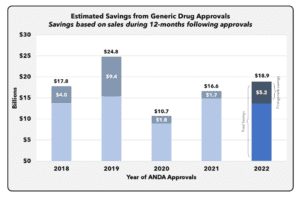Don’t Add Serious Illness Cover to Mortgage Protection


Should You Add Serious Illness Cover to Mortgage Protection?
Hi,
I’ve read on your blog that you should never add serious illness to mortgage protection policy because the bank will get any payout should I make a claim.
But what if I buy a life insurance policy with independent critical illness cover and give this to the bank for my mortgage?
Does this mean I’ll get the proceeds of any serious illness claim or does the bank still get it?
I hope that makes sense!
Marcin
That does make sense, Marcin; thanks for your question.
When getting a mortgage, you must get a mortgage protection policy.

You also have to assign (pass ownership) it to the bank.
So if you die before you repay the mortgage, your policy will pay out a big lump of money to the bank to clear said mortgage.
That all seems fair enough, right?
However, here’s the sneaky part:
If you add serious illness cover to your policy and claim the serious illness (say you get cancer or suffer a heart attack), who do you think gets the money?

or

Your money goes to that guy in the bank waving your letter of assignment, in which you agreed to transfer ownership of all of the benefits attached to your policy to him.
So even if you need that money for life-saving surgery, you’ll have to beg the bank to give it to you.
Good luck with that.
If you’re considering serious illness coverage and don’t want the proceeds to go to the bank to pay down your mortgage, please always buy it on a separate policy.
Get basic mortgage protection for the bank.
Protect yourself with serious illness cover (or better yet, income protection).
What About a Life Policy with Independent Serious Illness?
Remember our friend Marcin from earlier on, well he was getting a mortgage of €250,000.
He also wanted to put €50,000 Serious Illness Cover in place.
I advised him to:
get a basic mortgage protection policy for the bank
buy a separate €50,000 serious illness cover policy
But Marcin didn’t like that the cover on his mortgage protection policy would reduce over time.
He wanted it to clear the mortgage and leave some money to protect his family.
So, I advised him to buy two policies:
give the bank a basic mortgage protection policy for the €250,000
buy a separate life insurance policy including €50,000 serious illness cover
But he insisted on one policy covering the mortgage and his family.
I disagreed with him because you should never combine family and mortgage protection on one policy, and we came to blows.
Marcin is much bigger than me, so we went with just one policy.
So, to answer his question:
Who would get the proceeds of a serious illness claim on a life insurance policy with independent serious illness cover that was assigned to the bank.
No matter how you structure your policy, if you assign it, the bank will get any payout on your policy.
Should You Ever Add Serious Illness Cover to Mortgage Protection?
Yes.

If you want your mortgage cleared should you contract a serious illness covered by your policy, go ahead and add serious illness cover.
Just be aware:
The bank will get the proceeds of a serious illness claim (just in case I haven’t mentioned this already).
The amount that will pay out reduces over time, so buying 50k illness cover will pay out a lot less if you make a claim in, say, 15 years.
You can get an instant quote for mortgage protection and accelerated serious illness cover right here.
Over to you…
I hope that’s all clear.
Just to recap:
You should always buy your serious illness cover on a separate policy (unless you want the proceeds to go directly to the bank to pay your mortgage).
By the way, don’t obsess about serious illness coverage if you haven’t considered income protection.
Income protection is a much better option for most people.
Please complete this questionnaire if you’d like me to review where you are in life and make a no-obligation personalised recommendation.
![]()
![]()
Alternatively, if you’d like a quick chat first, please schedule a call here or call me on 05793 20836
Thanks for reading
Nick
Editor’s Note | We first published this article in 2017 and have updated it since.








